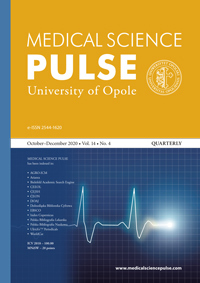Comparative analysis of socioeconomic, behavioral and biological factors between healthy patients and patients with newly diagnosed diabetes in the Lubuskie Voivodeship.
Comparative analysis of socioeconomic, behavioral and biological factors between healthy patients and patients with newly diagnosed diabetes in the Lubuskie Voivodeship.
Author(s): Iwona Bonikowska, Justyna Jasik-Pyzdrowska, Katarzyna SzwamelSubject(s): Health and medicine and law
Published by: Uniwersytet Opolski
Keywords: patients; type 2 diabetes mellitus; prediabetic state
Summary/Abstract: Background. The most effective way to prevent a dramatic increase in the number of diabetic patients lies in early detection of its risk factors and the diagnosis of carbohydrate metabolism disorders. Aim of the study. The study aims at determining socio-economic variables, lifestyle behaviours and biological factors differentiating patients with newly diagnosed diabetes from the diabetes-free individuals according to the American criteria issued by the Commission on Social Determinants of Health as well as FINDRISC form which helps identify patients who are at risk of developing diabetes type 2 on the basis of multi-factorial determinants of its development. Material and methods. The research was conducted in 2018 among 1167 primary health care patients from Lubuskie Voivodship using a diagnostic survey method which interviewed the respondents according to the FINDRISC standard questionnaire. Results. The group of healthy patients was similar to the group of patients with newly diagnosed diabetes in terms of such variables as age (p=0.713), sex (p=1), place of residence (p=1), level of education (p=0.076), professional activity (p=0.758), BMI (p=0.133), waist measurement (p=0.665), frequency of fruit and vegetables intake (p=0.572), frequency of taking hypotensive medications (p=0.176), frequency of diabetes occurrence in the family history (p=0.227) and physical activity (p=0.321). Conclusions. Early detection of carbohydrate metabolism disorders, with the use of standardized tools which assess diabetes development, appears to be an essential act in the prevention of this disorder. Therefore, there is a strong need to create a tool adjusted to the socio-demographic factors such as geographical location, economic conditions and lifestyle. Additionally, active and massive screening for carbohydrate metabolism disorders in patients with a low risk of diabetes development seems to be crucial in its prevention.
Journal: Medical Science Pulse
- Issue Year: 14/2020
- Issue No: 3
- Page Range: 55-63
- Page Count: 9
- Language: English

